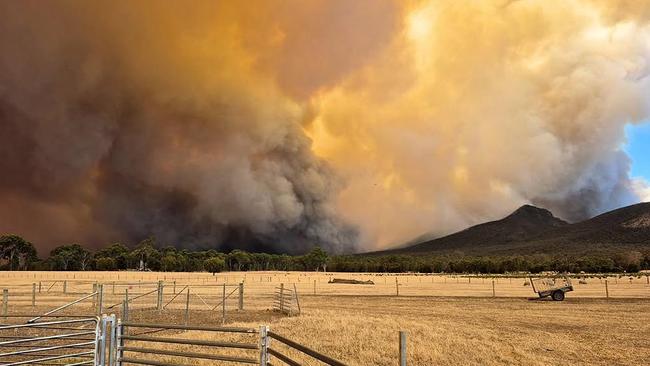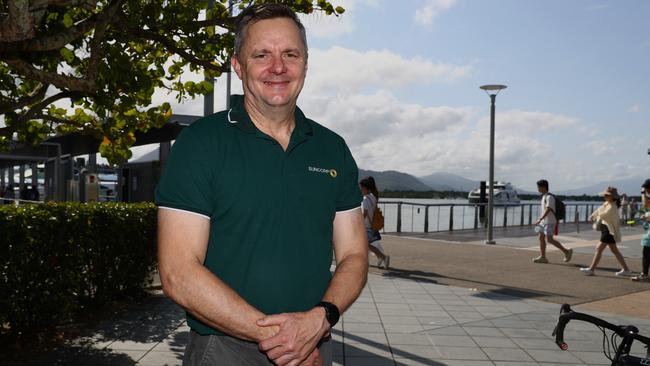Many problems originate from poor planning decisions made over the past century

The tragic reality and far-reaching impacts of extreme weather was evident in every conversation I had that day, whether it was with customers or people who didn’t have insurance at all.
Sure, one way or another, physical assets can be restored, but the lives of those who live through such horrific events will never be the same.
Lives lost, families torn apart, children scarred for life – meaning the cost to society of such events is a wide multiple of the cost of the physical rebuild.
This experience led me to advocate for a more resilient Australia through my role.
We developed a four-point plan: investment in more resilient public infrastructure, subsidies and other incentives to promote more resilient homes, a review of planning laws, and removing taxes and charges from insurance products.

Back then, about 97c of every dollar spent on disasters went to the response and recovery, with just 3c spent on future-proofing our communities against similar losses. Six years on and to the credit of the current crop of state and federal legislators that percentage is creeping closer to 90/10. But there is still so much left to do.
The past 12 months have shone the spotlight directly on the insurance industry, with multiple parliamentary and regulatory inquiries delving into claims handling, pricing and the critical issue of insurance affordability.
In my view, industry participants and the Insurance Council of Australia have engaged openly and constructively with these inquiries which have generally resulted in some constructive recommendations.
For instance, we recognise it’s no longer appropriate to laud the 98 per cent of claims we successfully resolve in big events when the 2 per cent tail accounts for hundreds of customers displaced from their homes long after the fires have gone out and the floodwaters have receded.
Issues like the timeliness and frequency of customer communications and the approach taken to vulnerable customers are being addressed at pace. The issue of affordability is far more vexing. The direct cost of much of a home insurance premium reflects the price of reinsurance, which is the insurance a company like Suncorp purchases to protect itself from significant events and the aggregation of smaller and mid-sized events.
It’s an interconnected global diversification of risk that has historically served Australia well. For many years, global reinsurers have been prepared to place their capital in Australia to diversify the risks they take elsewhere.
We Aussies have known that our wide brown land with its “droughts and flooding rains” puts us at a natural disadvantage when it comes to the frequency and severity of natural hazard events.

Trouble is, so too has the global reinsurance industry, who have now updated their models to take account of the frequency of risks they call secondary perils. In doing so they have materially reassessed the capital allocated and the cost of reinsurance for the Australian market. This has meant the cost of reinsurance and natural hazard allowances for a company like Suncorp has increased by more than $1bn over the past five years.
In highlighting this, I am in no way critical of the reinsurers. They have shareholders who demand appropriate returns for the risks inherent in this industry.
My point is simple: the best way to bring down the cost of insurance is to reduce risk. And the best way to reduce risk is to invest in resilience and mitigation initiatives.
It’s a topic worthy of debate at the forthcoming federal election.
The aim should be a dollar-for-dollar pre and post disaster spending ratio. In other words, for every dollar spent mopping up, a dollar is invested in mitigation.
That will equate to a multiyear, multibillion-dollar investment in the future resilience of our nation.
It’s not just governments that have to step up to this challenge. Insurance companies, banks, local councils and others will each need to play a part in designing a more resilient future.
Tough decisions will need to be made.
Many of today’s problems originate from poor planning decisions made over the past century. Sadly, we have allowed our citizens to buy and build in areas they should never have been allowed to buy or build in. And now, amid a housing crisis, we risk compounding the issue by prioritising the short term and repeating past mistakes.
The painful truth is that we need to confront the fact that as future events unfold, we will need to ask our citizens to move rather than rebuild. Informed by earthquake vulnerability, that’s exactly what they do in New Zealand – its aptly named “managed retreat”.
While this might provide sober reading, there is a glass-half-full perspective.
First, there is a healthy pipeline of ready-to-go resilience projects sitting on bureaucratic desks awaiting funding.
Secondly, and most importantly, we have a consensus among the government, opposition, insurers and other key stakeholders, including the banks, that collective action is required.
This goodwill won’t last forever.
It’s time for us all to seize the moment, and the forthcoming election campaign is a good place to start.
Steve Johnston is Suncorp CEO and incoming chair of the Insurance Council of Australia





Over the past few days, as we carefully monitor the bushfires in Victoria, I am taken back to 2019 when on the ground in Balmoral Village, just over an hour southwest of Sydney. I was there as the new Suncorp CEO inspecting the damage of the horrific Black Summer bushfires.